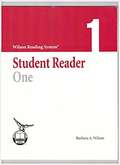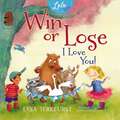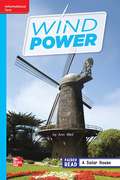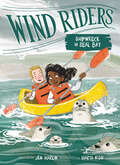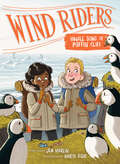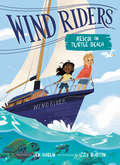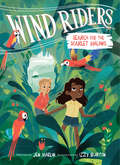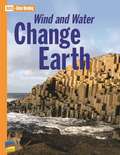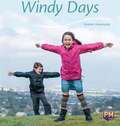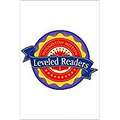- Table View
- List View
Wilson Reading System®, Student Reader Four
by Wilson Language Training CorporationNIMAC-sourced textbook
Wilson Reading System®, Student Reader Nine
by Wilson Language Training CorporationNIMAC-sourced textbook
Wilson Reading System®, Student Reader One
by Wilson Language Training CorporationNIMAC-sourced textbook
Wilson Reading System®, Student Reader Seven
by Wilson Language Training CorporationNIMAC-sourced textbook
Wilson Reading System®, Student Reader Six
by Wilson Language Training CorporationNIMAC-sourced textbook
Wilson Reading System®, Student Reader Ten
by Wilson Language Training CorporationNIMAC-sourced textbook
Wilson Reading System®, Student Reader Three
by Wilson Language Training CorporationNIMAC-sourced textbook
Wilson Reading System®, Student Reader Twelve
by Wilson Language Training CorporationNIMAC-sourced textbook
Wilson Reading System®, Student Reader Two
by Wilson Language Training CorporationNIMAC-sourced textbook
Wilson Reading System®: Student Reader One (Wilson Works)
by Barbara A. WilsonWRS STUDENT READER 1 contains phonetically controlled wordlists, sentences and stories that logically present practice with new concepts for Step 1 of the program. Wilson's two vocabulary levels (Level A and B) are included in each Reader.
Win or Lose, I Love You!
by Lysa TerKeurstDo your kids need a little help learning to compete kindly? How to win and lose well? From New York Times best-selling author and Proverbs 31 Ministries founder Lysa TerKeurst comes a lively picture book about sportsmanship.Lulu and Max have planned an exciting field day for their animal friends, and the winner will be the leader of the forest. But sore losers, bragging winners, and bad attitudes are taking the fun straight out of the contests! Just when the day seems ruined, someone steps in and turns things around. Finally, Lulu and Max must decide who will be leader of the forest. Their choice is a big surprise, but it feels just right.Through Lulu&’s love for her animal friends—no matter what—children will discover that their value comes from who they are, not how they perform. This gentle and playful story will help kids develop the skills they need to win at the most important parts of life: friendship and forgiveness.
Wind
by Alison Adams Lori O'DeaYou can't see wind, but you can see its effects. Explore the different ways in which wind can help and hurt us.
Wind Riders #3: Shipwreck in Seal Bay (Wind Riders #3)
by Jen MarlinHop aboard Wind Rider, a magical sailboat, with Max and Sofia, two ordinary kids trying to save the environment one problem at a time. Their third mission? Saving harbor seals from an oil spill! You never know where Wind Rider will take you...Max and Sofia's summer vacation gets wild when they stumble upon an abandoned sailboat in the mangrove forest. They’re given the chance to make a real impact when the boat magically transports them to a different corner of the world to help other kids save their environment! Wind Riders: Shipwreck in Seal Bay is the third book in an illustrated adventure chapter book series. Each story visits a new location and introduces a human-made problem that's endangering animals and the environment. With nature’s highest stakes and environmental activism baked into each book, as well as fun scientific facts included at the end, Wind Riders is a great chapter book series for newly independent readers who love nature documentaries, taking action, and learning about the world around them. There is beautiful two-color art throughout and an emphasis on collaborative problem-solving, compassion for the Earth and all its inhabitants, and friendship. The books are printed on partially recycled paper. Wind Riders is the perfect STEM chapter book series for fans of Magic Tree House, The Magic School Bus, and Zoey and Sassafras.
Wind Riders #4: Whale Song of Puffin Cliff (Wind Riders #4)
by Jen MarlinJoin Max and Sofia, two kids trying to save the environment one problem at a time with their magical sailboat. Their latest mission? Cleaning up the plastic waste that's hurting puffins and belugas in Iceland.In Starry Bay, summer vacation means snorkeling for sea glass by the beach, until Max and Sofia come across an abandoned sailboat. With a spin of the wheel, Wind Rider transports them to animals who need their help! This time, they drop anchor in Iceland's frigid waters, where Max and Sofia team up with the Puffin Patrol, a group of Icelandic kids who protect and preserve the local puffin colony. But it seems that the puffins aren't the only ones in trouble. Max and Sofia will have to think fast to save a beached beluga whale.Wind Riders: Whale Song of Puffin Cliff is the fourth installment in this highly illustrated chapter book series. Each story visits a new location and introduces a human-made problem endangering animals and the environment.With nature’s highest stakes and environmental activism baked into each book, as well as fun scientific facts included at the end, Wind Riders promises to be the chapter book series for newly independent readers who love nature documentaries and are hungry to learn about the world around them.There is beautiful two-color art throughout and an emphasis on collaborative problem-solving, compassion for the Earth and all its inhabitants, and friendship. The books are printed on partially recycled paper. Wind Riders is the perfect STEM chapter book series for fans of Magic Tree House, The Magic School Bus, and Zoey and Sassafras.
Wind Riders: Rescue on Turtle Beach (Wind Riders #1)
by Jen MarlinHop aboard Wind Rider, a magical sailboat, with Max and Sofia, two kids trying to save the environment one problem at a time. Their first mission? Rescuing baby sea turtles in the beautiful waters of Hawaii.Max and Sofia are ordinary kids whose lives are changed when they discover an abandoned sailboat. They’re given the chance to make a real impact when the boat magically brings them them to a different corner of the world to help other kids save their environment!Wind Riders: Rescue on Turtle Beach is the first book in an illustrated chapter book series about Max and Sofia’s adventures tackling real world problems. Each story visits a new location and introduces a human-made problem endangering animals and the environment.With nature’s highest stakes and environmental activism baked into each book, as well as fun scientific facts included at the end, Wind Riders promises to be the chapter book series for newly independent readers who love nature documentaries and are hungry to learn about the world around them.There is beautiful two-color art throughout and an emphasis on collaborative problem-solving, compassion for the Earth and all its inhabitants, and friendship. Wind Riders is the perfect STEM chapter book series for fans of Magic Tree House, The Magic School Bus, and Zoey and Sassafras.
Wind Riders: Search for the Scarlet Macaws (Wind Riders #2)
by Jen MarlinHop aboard Wind Rider, a magical sailboat, with Max and Sofia, two kids trying to save the environment one problem at a time. Their second mission? Protecting majestic scarlet macaw chicks in the most biodiverse place on Earth, the Amazon rain forest.Max and Sofia are ordinary kids whose lives are changed when they discover an abandoned sailboat. They’re given the chance to make a real impact when the boat magically transports them to a different corner of the world to help other kids save their environment.Wind Riders: Search for the Scarlet Macaws is the second book in an illustrated chapter book series about Max and Sofia’s adventures tackling real world problems. Each story visits a new location and introduces a human-made problem endangering animals and the environment.With nature’s highest stakes and environmental activism baked into each book, as well as fun scientific facts included at the end, Wind Riders promises to be the chapter book series for newly independent readers who love nature documentaries and are hungry to learn about the world around them.There is beautiful two-color art throughout and an emphasis on collaborative problem-solving, compassion for the Earth and all its inhabitants, and friendship. Wind Riders is the perfect STEM chapter book series for fans of Magic Tree House, The Magic School Bus, and Zoey and Sassafras.
Wind and Sun: An Aesop Tale (Fountas & Pinnell Classroom, Guided Reading Grade 1)
by Steve Horrocks Mia LewisNIMAC-sourced textbook
Window to the Sky
by James Flood Diane Lapp Nancy Roser William H. Teale Karen D. Wood James V. Hoffman Carl B. Smith Elaine Mei Aoki Virginia A. Arnold Miriam Martinez Annemarie Sullivan Palincsar Michael Priestley Josefina Villamil Tinajero Arnold W. Webb Peggy E. WilliamsThe book contains good materials for reading.
Windows to Algebra and Geometry: An Integrated Approach
by Ron LarsonAs you study this book you will be able to understand the value and purpose of what you are learning. That's why the book begins each lesson explaining what you should learn and why you should learn it.
Windows to the World: An Introduction to Literary Analysis
by Lesha MyersWhy do certain literary works have the power to move us? With step-by-step instructions, Windows to the World teaches students how to analyze elements of literature. This reference also gives numerous examples and suggestions for helping students develop Christian discernment skills.
Windy Days (Into Reading, Level I #15)
by Heather HammondsNIMAC-sourced textbook <p><p> On windy days, we can hear the wind blow. We can feel the wind. The wind makes things move.

